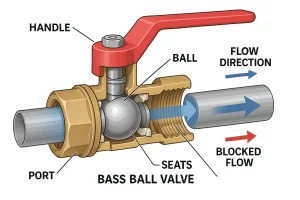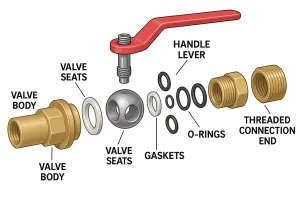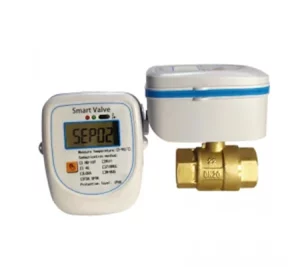Avoid your inquiry is delay response, please enter your WhatsApp/WeChat/Skype along with the message, so we can contact you at the very first time
We will reply you within 24 hours. If for urgent case, please add WhatsApp: +8613188899036, or WeChat: 0531-87968777. Or call 0531-87968777 directly.
* We respect your confidentiality and all information are protected. We will only use your information to respond to your inquiry and will never send unsolicited emails or promotional messages.
Every year, building managers and industrial engineers face a familiar frustration—leaks, hard-to-control water flow, and maintenance delays threaten safe, efficient operations. When the wrong valve type is chosen, entire pipeline sections can fail, costing time and money.
A brass ball valve is a versatile shut-off and control device used to regulate water, gas, or other fluids in pipeline systems. Its internal ball rotates with a quarter turn of the valve handle, allowing or blocking flow. Thanks to brass’s durability and corrosion resistance, these ball valves are used for water supply, HVAC, and industrial applications where reliability is crucial.

Brass Ball Valve Operation Diagram
As a leading valve manufacturer and solution provider, our plants combine precision machining with smart automation to deliver the most reliable and customizable brass ball valves on the market.
We support:
Our valves power landmark infrastructure projects globally. Whether you’re integrating into an HVAC system, a district energy grid, or upgrading industrial automation, we engineer the brass valves that deliver performance, efficiency, and data—every time.
Ball valves are essential components for safe and efficient pipeline operation. Unlike gate valves, globe valves, or butterfly valves, a ball valve relies on a ball with a hole (bore) through the middle. The valve handle turns this ball 90°, instantly switching between fully open and closed states.
Key advantages of ball valves:
| Valve Type | Shut-Off Quality | Typical Use | Maintenance |
|---|---|---|---|
| Ball valve | Excellent (bubble-tight) | Isolation, control in pipelines, HVAC | Easy, inline possible |
| Gate valve | Good | Mainline shut-off, infrequent use | Can require full removal |
| Globe valve | Moderate | Throttling, frequent modulating | More complex |
| Butterfly valve | Good | Large bore, low-pressure systems | Easy disc replacement |
Ball valves are commonly used where reliability and quick shut-off are essential. They are also more compact than many other types of valves.
A modern brass ball valve consists of several precision-engineered components:
| Valve Parts | Function | Material |
|---|---|---|
| Ball | Opens/closes flow | Brass, stainless steel |
| Valve seat | Seals ball to body | PTFE, R-PTFE |
| Body | Contains pressure | Brass (lead-free, often certified) |
| Stem | Turns ball | Plated steel, brass |
| Handle | Manual operation | Aluminum, zinc |
How it works:
When the handle turns, the stem rotates the ball inside the valve body. If the bore aligns with the pipeline, the valve is open; a quarter turn blocks the flow completely.

Exploded Brass Ball Valve Parts
Brass ball valves are designed for precise control in HVAC, chilled water, and hydronic heating systems. The floating ball design allows the ball to shift slightly and seal tightly against the downstream valve seat, even under fluctuating pressure.
Why use brass ball valves in water supply and HVAC?
Case Study: A hospital retrofit replaced 80 aging gate valves with new full-port brass ball valves—result: 30% drop in water loss and 40% faster isolation during emergencies.
Brass ball valves minimize leakage and help maintain proper system pressure, preventing pump overwork and reducing energy consumption.
In certain industrial and process applications, standard valves may not suffice. A high-pressure ball valve is engineered with thicker valve bodies, reinforced valve seats, and blow-out-proof valve stems for extreme conditions. These are essential where line pressure exceeds 20 bar or temperature swings are common.
| Feature | Standard Ball Valve | High-Pressure Ball Valve |
|---|---|---|
| Pressure Rating | Up to 600 psi | 1000–3000 psi+ |
| Body Thickness | Standard | Heavy-duty |
| Ball Support | Floating | Trunnion or floating |
| Seat Material | PTFE | R-PTFE, metal, graphite |
Applications include:
Brass ball valves can handle a wide range of pressures, but for superheated steam or corrosive media, stainless steel ball valves are preferred.
Selecting the right connection type for your brass ball valve ensures safe, leak-free integration into your pipeline. Each type has its pros and cons:
| Connection Type | Typical Use | Benefits |
|---|---|---|
| Threaded | Domestic/commercial | Easy replacement |
| Solder/Sweat | HVAC, water supply | Compact, leak-proof |
| Compression | Gas, lab, medical | No heat, fast install |
| Flanged | Large/industrial | Service without cutting |
Tip: For critical lines, union-end or flanged valves let you service or swap the valve parts without disturbing the pipeline.
Understanding the various types of brass ball valves helps you pick the best solution for your system:
| Valve Type | Use Case | Advantages |
|---|---|---|
| One-piece | General shut-off, compact install | Low price, fewer joints |
| Two-piece | Water/gas isolation | Easier to repair |
| Three-piece | Industrial/process | Inline maintenance |
| Three-way | Mixing/diverting, HVAC loops | Replaces 2+ valves |
| Vented | Gas, safety-critical | Relieves pressure buildup |
“Three-way ball valves saved us hours of labor in HVAC control panels, replacing complex multi-valve manifolds with a single, easy-to-service valve.” — Project Manager, International HVAC Integrator
For more advanced control or automation, see our smart valve solutions.
Applications of brass ball valves cover a huge range of scenarios—beyond simple water shutoff, they play vital roles in:
A city’s water department replaced over 500 legacy plug valves with full-port brass ball valves across its main supply grid.
Results:
Brass ball valves are essential when a balance of durability, cost, and corrosion resistance is needed, especially in potable water supply and drainage.
One benefit of three-piece ball valves and some union-end designs is that you can repair or replace valve parts—including the ball, seats, and seals—without removing the entire valve from the pipeline. This reduces downtime and labor costs.
Preventive maintenance for brass ball valves:
| Maintenance Task | Recommended Frequency | Expected Outcome |
|---|---|---|
| Cycle valve handle | Every 3-6 months | Free, smooth movement |
| Inspect for leaks | Annually | Early fault detection |
| Seat/seal replacement | Every 5-10 years | Maintains shut-off seal |
Smart tip: Using IIoT-enabled smart valves can provide predictive maintenance alerts based on position and torque monitoring, further reducing the risk of sudden valve failure.
Modern facility managers are increasingly choosing smart brass ball valves that can be automated for remote or scheduled operation.
Why automate ball valves?
Automation options include:
Quote:
“After upgrading to flow regulating valves with smart ball valve automation, we cut both downtime and water waste by 22%.”
— Energy Manager, Large Commercial Complex

Automated Brass Valve
Choosing the right brass ball valve isn’t just about size—it’s about matching all system requirements for pipeline safety, performance, and service life.
| Selection Criteria | Why It Matters | Our Standard |
|---|---|---|
| Pressure rating | Avoids valve failure/leakage | PN25 (375 psi) |
| Port type (full/reduced) | Affects Cv, energy efficiency | Full-port |
| Seat material | Determines compatibility, durability | R-PTFE, PTFE |
| Connection type | Eases installation & maintenance | Threaded, solder, compression, flanged |
| Certification | Ensures compliance | NSF-61, lead-free |
| Automation option | Enables BMS, reduces manual labor | Electric, pneumatic, manual |
| Pressure (bar) | Failure Incidence (per 1000 valves/year) |
|----------------|------------------------------------------|
| 10 | 0.5 |
| 16 | 0.9 |
| 25 | 1.3 |
| 40+ | 3.8 (steel ball valve recommended) |
Chart insight: Brass ball valves are reliable up to ~25 bar; beyond this, consider stainless steel ball valves or dedicated high-pressure ball valves for safety and long-term durability.
In 2024, our factory supplied 2,500+ custom brass ball valves to a Middle Eastern municipality’s water network upgrade.
Before:
After installation:
Why it worked:
How long does a brass ball valve last in typical service?
With routine cycling and clean water, a brass ball valve can easily last 15-20 years. For critical lines, regular seat and stem seal inspections are recommended.
What’s the difference between a floating ball and a trunnion ball?
A floating ball valve relies on the pressure of the pipeline to push the ball against the downstream seat. Trunnion ball valves use additional shaft supports—great for large diameters and high-pressure systems.
Can I automate an existing manual ball valve?
In most cases, yes. If your valve has an ISO 5211 mounting pad, you can add an electric or pneumatic actuator for automation.
Are all brass ball valves safe for potable water?
No—always check for lead-free and NSF-61 certification to ensure compliance with drinking water safety standards.
How do I know which connection type to choose?
Threaded is easy for small-diameter lines and residential; soldered is best for copper water supply. Flanged is for frequent service or industrial.
Do brass ball valves work for gas as well as water?
Yes, provided they have the correct seals and approvals—check with your supplier for local codes.
Need a quote or technical advice? Contact our engineering team today—see how our smart brass ball valves can maximize your pipeline performance and reliability!